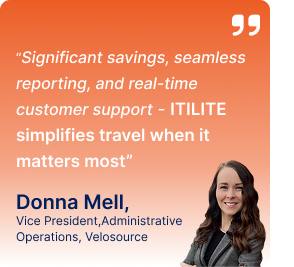As organizations scale, the number of financial transactions increases rapidly, which makes centralized payments essential within the first 100 words. Manual or decentralized systems often lead to delays, errors, and compliance risks.
According to ArionERP, a manual invoice can cost organizations around 10.60 USD to process, while automation reduces the cost to 2.25 USD.
These numbers show why centralized payments are rapidly becoming a strategic priority.
TL;DR
- Centralized payments give businesses full visibility into spending
- Automation reduces processing costs and payment errors
- Central control strengthens compliance and reduces fraud
- Finance teams gain faster reconciliation and better forecasting
- Tools like ITILITE help automate and streamline payment workflows
What Are Centralized Payments
Centralized payments refer to a financial model where all organizational payments are managed through one unified system. Instead of different departments managing payments separately, every transaction flows through a single platform with standard processes.
Centralized Payments vs Decentralized Payments
- Centralized: One system, unified governance, strong compliance
- Decentralized: Multiple systems, fragmented visibility
Finance leaders prefer centralized structures because they reduce blind spots and significantly improve accuracy.
How Centralized Payment Systems Work
A centralized payment system integrates with ERPs, accounting tools, procurement platforms, and corporate banking channels to create an automated, end-to-end workflow.
- Invoice Capture – All invoices are digitized and stored in one place.
- Approval Workflows – Role-based approvals ensure only authorized individuals clear payments.
- Payment Execution – Payments are processed centrally via bank transfers, cards, ACH, UPI, or virtual accounts.
- Reconciliation – Automated reconciliation pairs invoices with payments instantly.
- Real-Time Dashboards – Finance leaders monitor vendor spending, budgets, and variances through live dashboards.
- Real- Time Dashboards – Platforms like itilite support this entire cycle, enabling companies to reduce duplicate payments and eliminate manual errors.
Calculate your savings now!
Hidden Costs of Non Centralized Payments
Organizations that still use decentralized payment models face several invisible expenses.
1. Siloed Processes
Teams work independently, causing approval delays and duplicate work.
2. High Risk of Errors
ResolvePay reports that manual invoice handling can cost 15 to 16 USD per invoice, mainly due to errors and slow routing.
3. Higher Fraud Exposure
Zenwork highlights that decentralized systems increase the risk of unauthorized payments and fake invoices.
4. Poor Spend Visibility
Fragmented processes make it difficult for CFOs to locate spend leakages.
5. Cost Overruns
Datavestigo notes that invoice error corrections alone can increase processing costs by up to 20 percent.
Benefits of Centralized Payments
A centralized system strengthens the finance function and eliminates operational inefficiencies.
- Better Spend Visibility – Businesses can track every rupee by department, category, or vendor.
- Standardized Processes – Centralized rules ensure that all teams follow the same protocols.
- Reduced Fraud – Audit trails and controlled access minimize unauthorized activity.
- Faster Processing – Automation shortens the invoice to payment cycle, which boosts productivity.
- Better Vendor Relationships – Consistent, timely payments improve vendor trust and enhance negotiation leverage. itilite helps companies realize these advantages by combining policy controls, automated approvals, and integrated payment execution.
Key Features to Look for in a Centralized Payment Platform
1. Unified Dashboard: A single view for all invoices, payments, and pending actions.
2. Role-Based Approvals: Clear, controlled workflows with audit trails.
3. Automated Reconciliation: Instant mapping of payments with invoices.
4. Fraud Detection: Auto flagging of duplicates and suspicious transactions.
5. Integration with ERP and Banking: Smooth syncing of financial data across tools.
When Should a Business Move to Centralized Payments
1. Multiple Entities or Locations: Centralization prevents process fragmentation.
2. High Invoice Volumes: Automation significantly cuts costs and saves labor hours.
3. Need for Strong Compliance: Centralized data makes audits simpler and more accurate.
If your company fits these criteria, it is time to consider centralization.
How to Transition to a Centralized Payment System
Step 1: Identify Gaps
Map delays, manual steps, and compliance issues.
Step 2: Build Approval Structures
Define which roles approve which payments.
Step 3: Implement Automation
Choose software that integrates with your ERP and accounting tools.
Step 4: Train Teams
Train finance and procurement teams to boost adoption.
itilite simplifies this transition through ready-to-use workflows and automated policy checks.
Real-World Example
Before Centralization
- Duplicate vendor entries
- Delayed reimbursements
- No consolidated reporting
- Frequent payment errors
After Centralization
- 70 percent faster invoice processing
- Unified vendor ledger
- Automated reconciliation
- Complete budget control
This transformation helps organizations scale without adding financial overhead.
Conclusion
Centralized payments are no longer a simple process upgrade. They are a strategic enabler that strengthens compliance, improves cash flow, reduces fraud risk, and supports better business decision making.




